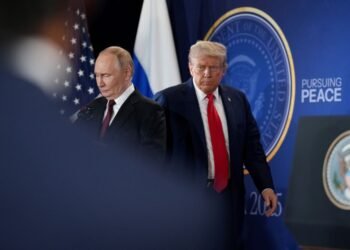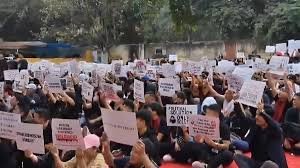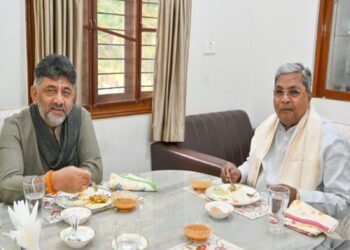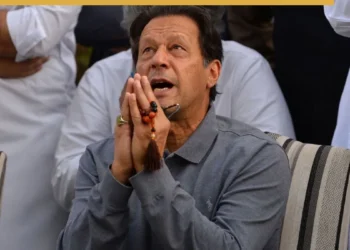By PC Bureau
April 10, 2025
A seemingly innocuous piece of clothing has ignited a firestorm of debate in Manipur, spilling over into the online sphere and exposing deep-seated ethnic and cultural tensions. The controversy centers on the shawl worn by President Droupadi Murmu when she landed in Vienna, Austria, on April 9, 2025, during an official visit. What began as a moment of pride for some has morphed into a contentious dispute, with rival communities and organizations staking claims to the shawl’s origin, each accusing the other of misrepresentation.
The Kuki Claim: A Symbol of Pride
The Kuki community was quick to celebrate the President’s attire, identifying the shawl as their traditional Saipikhup. Social media platforms, particularly X, buzzed with jubilant posts from Kuki voices hailing the gesture as a recognition of their cultural heritage. Kuki Inpi Chandel, a prominent community organization, expressed gratitude in a post: “Kuki Inpi Chandel extends heartfelt gratitude to the Hon’ble President of India Pi Droupadi Murmu for honouring Kuki Shawl during her visit to Austria. This symbolic gesture reflects her deep commitment to preserving India’s rich tribal heritage & legacy.”
Individual voices echoed this sentiment. Seimin Doungel, an X user, wrote, “The President of India wore one of traditional Kuki shawl during her visit to Vienna, subtly countering Meitei claims that the Kuki-Zo’s are illegal immigrants. This gesture highlights the Kuki community’s rich cultural heritage and their rightful place in India.” Another user, Min Ngulminthang, took a sharper tone, alleging, “Meitei fascists are clearly frustrated that the President of India chose to wear a Kuki traditional shawl. Perhaps they should file an FIR against the President for daring to wear the shawl of a people they consider beneath them.”
Even a professor can spread misinformation. Not every tribal shawl is a Kuki shawl.
For your kind information, I think the shawl in question is a traditional Sambalpuri shawl of the Odisha tribes, not a Kuki shawl.To the Kuki professor from JNU, please stop spreading such… https://t.co/hpgyjGFX3s
— Khuraijam Athouba (@Paari_Athouba) April 10, 2025
ALSO READ: Rebel Forces Seize Key Myanmar Towns Near India Border
Adding academic weight to the Kuki narrative, Thongkholal Haokip, a professor at Jawaharlal Nehru University (JNU) and editor of Journal of North East India Studies, posted on X: “How pleasing is it to see our President Smt. Droupadi Murmu wearing Saipikhup shawl.” His statement, accompanied by a photo of the President, further fueled the Kuki claim and drew widespread attention.
COCOMI Claims Odisha’s link:
The Kuki celebration was swiftly challenged by the Coordination Committee of Manipur Integration (COCOMI), a Meitei-led organization, which asserted that the shawl was not of Kuki origin but rather a product of Odisha handicraft. COCOMI’s statement pointed to the President’s own heritage—she hails from Odisha and is known for proudly representing its tribal traditions—as evidence supporting their claim. They suggested the shawl was a traditional Sambalpuri shawl, a handwoven textile iconic to Odisha’s tribal communities, renowned for its intricate patterns and vibrant colors.
Indian President Smt. Droupadi Murmu, during her visit to Vienna, Austria, donned the traditional Thadou shawl, ‘Saipikhup.’ This exquisite piece, handwoven by skilled Thadou artisans, is a motif of ‘Elephant’s Knee.’ The intricate design and craftsmanship showcase the rich… https://t.co/KB0MtmXHO8
— Thadou Students’ Association (@TSA_GHQ) April 9, 2025
“For your kind information, I think the shawl in question is a traditional Sambalpuri shawl of the Odisha tribes, not a Kuki shawl,” a COCOMI representative stated, directly addressing Professor Haokip’s post. “To the Kuki professor from JNU, please stop spreading such misleading claims. Let us also remember that the Hon’ble President of India, Smt. Droupadi Murmu, herself hails from Odisha and proudly represents its rich tribal heritage.”
ALSO READ: Kuki-Zo Warn Meitei Against Chinga Kaba Buffer Breach
The Thadou Twist: A Third Contender Emerges
Adding a surprising twist to the debate, the Thadou Students’ Association (TSA), a group representing the Thadou tribe—a distinct ethnic community often grouped under the broader Kuki-Zo umbrella—claimed the shawl as their own. In a detailed post on X, TSA declared, “Indian President Smt. Droupadi Murmu, during her visit to Vienna, Austria, donned the traditional Thadou shawl, ‘Saipikhup.’ This exquisite piece, handwoven by skilled Thadou artisans, is a motif of ‘Elephant’s Knee.’ The intricate design and craftsmanship showcase the rich cultural heritage of the Thadou people. Kudos to the president for embracing and showcasing India’s diverse cultural legacy on the global stage!”
Meitei fascists are clearly frustrated that the President of India chose to wear a Kuki traditional shawl. Perhaps they should file an FIR against the President for daring to wear the shawl of a people they consider beneath them. @rashtrapatibhvn pic.twitter.com/EO91a4DOg7
— Min งึลมินธัง (@ngulmint) April 10, 2025
The TSA’s statement subtly distanced itself from the broader Kuki narrative, emphasizing that “not every tribal shawl is a Kuki shawl,” hinting at tensions within the larger Kuki-Zo community over cultural ownership and representation. Though TSA enjoys limited support among the wider Thadou population, their claim has added yet another layer of complexity to the controversy.
ALSO READ: Analysis: Ethnic Rivalries Unravel Stability in Manipur’s Hills
A Cultural and Political Flashpoint
The debate over President Murmu’s shawl is more than a mere disagreement over fabric—it reflects deeper ethnic rivalries and political undercurrents in Manipur. The Kuki and Meitei communities have long been at odds, with disputes over land, identity, and political representation frequently boiling over into conflict. The shawl controversy has become a proxy battleground, with each side interpreting the President’s choice as either an affirmation of their identity or an affront to it.
For the Kukis, the President’s attire is a powerful rebuttal to Meitei narratives that question their indigeneity. For COCOMI and the Meiteis, it’s an opportunity to assert that the Kuki claim is exaggerated and to redirect attention to Odisha’s cultural legacy, aligning with the President’s roots. Meanwhile, the Thadou assertion underscores intra-tribal dynamics, highlighting how even allied communities can diverge in their pursuit of recognition.
The Shawl in Question: What Do We Know?
Photographs from Vienna show President Murmu draped in a shawl featuring intricate geometric patterns, a style common to many tribal textiles across India. The Saipikhup shawl, as described by both Kuki and Thadou advocates, is characterized by its detailed handwoven designs, often symbolizing cultural motifs like the “Elephant’s Knee.” Conversely, Odisha’s Sambalpuri shawls are known for their double-sided weaving and vibrant hues, frequently incorporating nature-inspired patterns.
Without an official statement from Rashtrapati Bhavan clarifying the shawl’s origin, the debate remains speculative. Textile experts note that similarities between tribal weaving traditions across regions can make identification challenging without provenance. For now, the shawl’s true identity remains as contested as the narratives surrounding it.
A Nation Watches
What began as a moment of cultural pride has spiraled into a polarized online debate, with X serving as the primary arena for claim and counterclaim. As voices grow louder and accusations sharper, the incident underscores the fragility of ethnic harmony in Manipur and the power of symbols in shaping identity. Whether Kuki, Thadou, or Odishan, the shawl has transcended its role as mere attire, becoming a mirror to India’s complex tapestry of cultures—and the tensions that lie beneath.
For President Murmu, whose tenure has been marked by a commitment to tribal representation, the Vienna visit was likely intended as a gesture of unity. Instead, it has sparked a storm that shows no signs of abating. As the nation watches, one question lingers: can a single shawl weave together a fractured narrative, or will it only deepen the divide?













